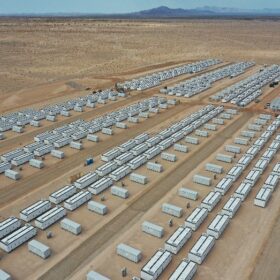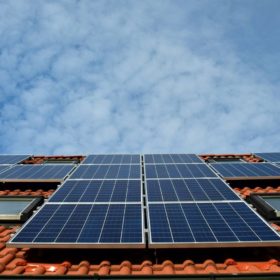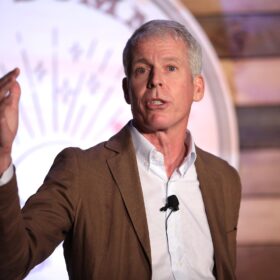From pv magazine Global
New research from Stanford University has shown that California could massively rely on renewable energies to cover its electricity demand without risks of blackouts and high energy prices.
“Our work shows that the main grid in the world’s fifth-largest economy was able to provide more than 100% of the electricity that it used from only four clean renewable sources: solar, wind, hydroelectric, and geothermal, for anywhere from 5 minutes to over 10 hours per day for 98 out of 116 days during late winter, all of spring, and early summer, as well as for 132 days during the entire year of 2024, without its grid failing,” Mark Jacobson, professor of civil and environmental engineering at Stanford University and the research’s lead author, told pv magazine.
According to the study, the growth of solar, wind and battery storage, in particular, resulted in fossil gas use dropping 40% during the 116-day period and 25% during the entire year of 2024 relative to 2023. “In comparison with 2023, solar, wind, and battery capacities increased significantly, with batteries doubling in capacity,” Jacobson added. “In fact, batteries met a peak of 12% of nighttime demand during the period of interest. The decrease, in just one year of 25% of gas use on the CAISO grid indicates the complete phase-out of gas is approaching. This also debunks the myth that gas must increase when renewables increase on the grid.”
Jacobson also explained that high electricity prices in California have nothing to do with renewables. “Without renewables, prices would have been higher,” he went on to say. “In fact, 10 of the 11 U.S. states with higher fractions of their demand powered by renewables have among the lowest U.S. electricity prices. Instead, in California, the spot price of electricity dropped by over 50% during the period of interest between 2023 and 2024, indicating it was easier to match demand with supply with the increase in renewables and batteries in 2024.”
According to Jacobson, California electricity prices are high because of several reasons that have nothing to do with renewables. These include high fossil gas prices, utilities passing on to customers the cost of wildfires due to transmission-line sparks, the cost of undergrounding transmission lines to reduce such fires, the costs of the San Bruno and Aliso Canyon gas disasters, the cost of retrofitting gas pipes following San Bruno, the cost of upgrading aging transmission and distribution lines, and the cost of keeping the Diablo Canyon nuclear plant open.
“In sum, available data indicate that increasing the share of wind, solar and hydropower reduces electricity prices throughout the United States,” Jacobson stated. “When high prices occur, they are not due to renewables.”
The research findings are available in the paper “No blackouts or cost increases due to 100 % clean, renewable electricity powering California for parts of 98 days,” which was recently published in Renewable Energy.
This content is protected by copyright and may not be reused. If you want to cooperate with us and would like to reuse some of our content, please contact: editors@pv-magazine.com.









The electrical prices in California are ridiculously high. In general, P G & E charges approximately 46 cents per kWh and into the fifties for peak times while in Colorado, peak is approximately 11 cents and off peak is 7 cents per kWh. In addition, as a consumer, it seems to me the California Public Utilities Commission (PUC) has completely represented the interests of utilities to the detriment of the consumer. I can only imagine how difficult it must be for a manufacturing company which uses large amounts of electricity to be competitive in California when one of its main inputs of manufacturing is so expensive. The PUC’s capitulation to dismantle the solar standard 2.0 has left the solar industry in tatters as the breakeven point in years for solar for a residential home has in many cases doubled. I understand that the utilities were grappling with two issues: 1) solar was so successful in California under NEM 2.0 that the grid has more afternoon power than it knew what to do with. The PUC’s solution was so gut the incentives so additional solar would not be brought on line when I think the solution should have been to figure out how to bring more batteries on line to store the excess power that the utilities were paying for but were unable to use. 2) the utilities underspend on capital expenditures for decades such that when the grid’s weaknesses were exposed, the solution was to pay for massive upgrades all at once and bill/bilk the rate paying public. Admittedly, this is a hugely difficult problem in balancing but one that the utilities companies, the PUC, and California State government have bungled to the detriment of paying public today and economic growth tomorrow as more companies leave the State because electricity is so expensive relative to other states. I think the State has to help the utilities invest in battery power to better manage the peaks and valleys of demand because we can’t afford to literally let good power go to waste as we are doing in the afternoons now. Secondly, thoughtful capital expenditures need to be spent upgrading the long neglected infrastructure. However, this all can’t be done at once. If the Legislature needs to step in to give the utilities legal relief on this, they should provided the utilities manage their public trust with a better eye on their California constituents than solely on their shareholders. IN MY OPINION, THIS IS THE BIGGEST ISSUE IN CALIFORNIA AND NOBODY IS TALKING ABOUT IT1! This should be the main issue of the 2026 governor’s race.